Foilhamurum is such a stumbling block in its etymological arrangement that it may be better adopt some other name like Valencia Cable Creek – Tralee Chronicle, 17 July 1866
Foilhomurrum Bay was catapulted onto the world stage in 1866 when it became the site of the first successful telegraph cable link with Newfoundland in Canada. Since 2003, the historic site has been in the ownership of the Browne family of Castleisland, Co Kerry.

In 1866, as now, Foilhomurrum was ‘a stumbling block’ for writers but its geography was clearly defined: a small bay off the south west coast of Valencia Island in county Kerry, Ireland.[1]
Foilhomurrum, for those in search of its meaning, is derived from the Irish as the Cliff where Hamrum drowned, and great must have been the man and the tragedy for his name to have been enshrined in the place-name.[2]
‘Hamrum’s Cliff’ is situated in the townland of Coarha Beg.[3]

Coarha Beg
The scenic calm of Coarha Beg today belies a colourful history. In 1844, in consequence of ‘resistance to the levy of grand jury cess.’ tax collector, magistrate and police proceeded there to distrain. However, they withdrew when they faced a mob a hundred strong. The tax collector returned of course, though this time the stipendiary magistrate took an increased force of police, and the Tartarus steamer was ordered from Cork with 68 marines to lend a hand. Her Majesty’s ship Lynx, under Commander Nott, was placed in a position to command the ground and on this occasion, the tax was levied. Eighteen people were arrested.[4]
In those days, Clynacartan, a village situated at Coarha Beg, was the ‘capital’ of Valencia; the island population large.[5] A copper mine was worked at Foilhomurrum, east of Clynacartan, producing 65 tons of ore in 1861 and 34 tons in 1862.[6]
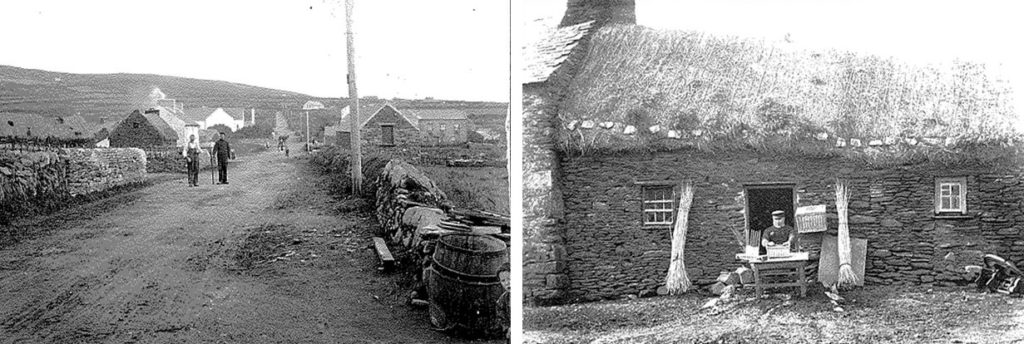
Coarha Beg once lent its name to Coarha Beg House, the grand residence of the Spotswood family, of which property nothing remains. Captain John Spotswood, JP, was a popular man on the island and commanded the Valentia Yeomanry Corps.[7]
In days gone by, Coarha Beg had its share of shipwrecks. In the mid nineteenth century, wreckage from the Thor was picked up there as well as a board bearing the name Ulverstone. A few years later, the James Murphy perished, its cargo rapidly sold at Port Magee.[8]
The disused telegraph cable at Foilhomurrum later became booty to souvenir hunters and sections were said to have disappeared under the cover of night. Council worker Bobby O’Shea was surprised to discover a remaining piece of the cable while working at Foilhomurrum in 2001.[9]

Valencia Island
Contrary to its Spanish sounding name, Valencia, sometimes Valentia, is derived from Beal Insi, the mouth of the isle.[10] From this place, the Annesley family take the title of Viscounts Valentia.[11]
In ancient history, Valencia was the home of the celebrated blind druid warrior, Mogh Ruith, said to have gained the Battle of Knocklong in county Limerick.[12]

In more recent times, Oliver Cromwell built two forts on Valencia Island, one to the north east of the island – site of the lighthouse – and the other at Foilhomurrum, which the Lord Protector adapted from an early promontory fort.[13] A ruined Watch Tower nearby was said to have been used by French privateers during Queen Anne’s wars to alert them to approaching ships of war.[14]
A little closer to our time, 1865, artist Robert Charles Dudley sat among the ruins of Cromwell’s Fort to capture the majestic scenes of Foilhomurrum Bay during the cable laying attempt of that year.
The cable, hauled by many willing hands up to the top of the cliffs of Foilhomurrum, wound its way into an ‘instrument house’ in a field – the Telegraph Field. In 1866, when the successful connection with Newfoundland was finally made, Foilhomurrum found its place in the history of telecommunication.
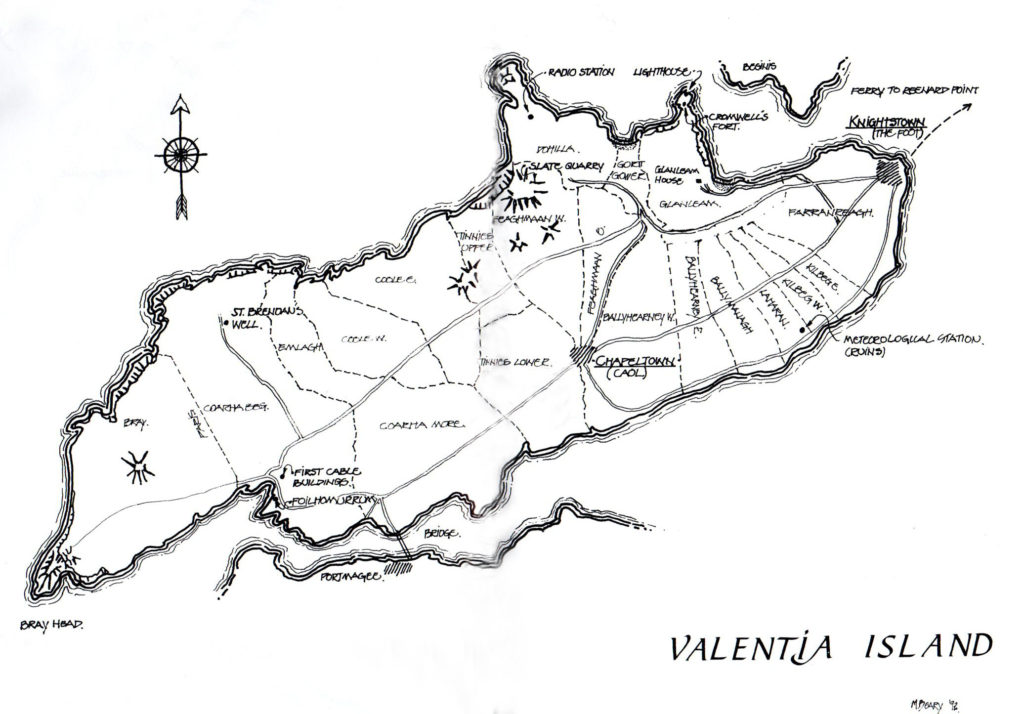
The Telegraph Hut, Foilhomurrum, 1865-1871
The ‘instrument house’ was a wooden telegraph hut with accommodation for six which functioned for about three years at Foilhomurrum. It was built in 1865, with plans to transform the area into a ‘market and town’:
The selection of Foilhamurrum enables the Atlantic Telegraph Company to save several miles of costly line and gives greater security to the shore end of the cable and will shorten the time required for the transmission of the electric current through the ocean … a capacious telegraph station will be erected, furnished with all the latest inventions of telegraphic advance. Clerks, officers, boatmen, will be stationed here, and Foilhamurrum will become a market and town.[15]
The builder is not known, though it resembles the work of portable building manufacturer, Samuel Hemming.
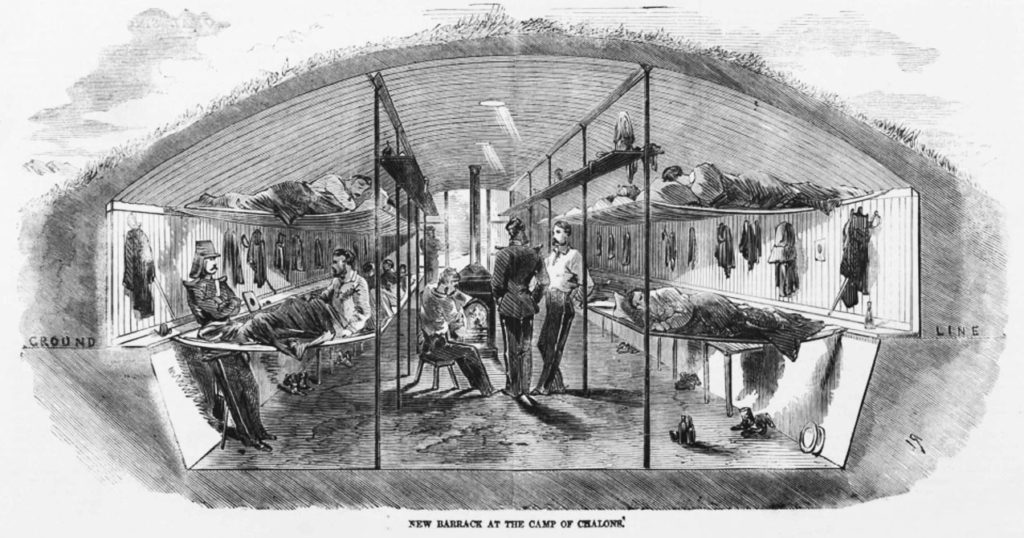
The wooden construct bore up under a great gale that struck the island in early 1866:
So great was the gale at Valencia on Wednesday, Thursday, and Friday that a wooden house constructed at the Telegraph Station, Foilhamurram, by Mrs Young as a place of accommodation was blown into splinters. It had stood all the winter, was held down by braces of chain passing over and over and fastened in the rocks – all succumbed to the ‘Nor Wester’ on Friday. Mr O’Callaghan’s constructions have not yielded a peg – in the same spot.[16]
The weather was more amenable later that year when Foilhomurrum was buzzing with people anxious to get inside the cable station to witness for themselves the ‘scientific mysteries,’ but it was strictly off limits to the public. The station was described as ‘a rambling whitewashed structure, which almost precisely resembles the Club-house at Aldershott on a small scale’:
There is a sanctum sanctorum called the instrument-room, a very small and carefully darkened apartment into which none enter but Mr Varley, or the one or two whom Mr Glass, on rare occasions, allows to see the scientific mysteries.[17]
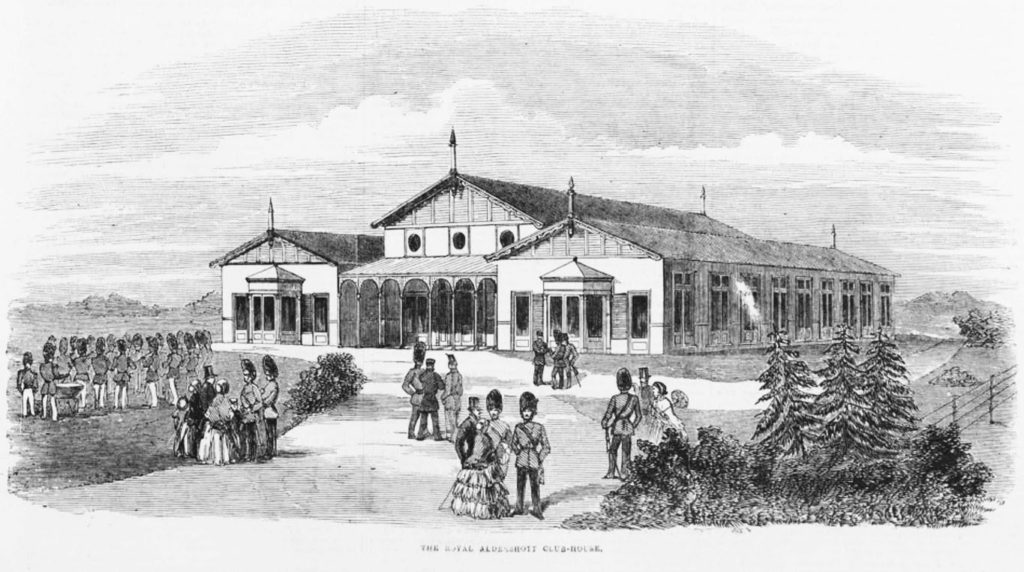
One year on, with telegraph transmissions well underway, the threat of Fenian activity caused a temporary police station to be placed in the vicinity of the telegraph house to protect the cable.[18]
In 1868, it was decided to transfer telegraph operations to Knightstown and the cable station, scene of so much worldly attention, became defunct.

In 1871, the building was dismantled and donated to the voluntary Valentia Village Hospital in Knightstown, a project endowed by Lady Fitzgerald.[19] From about 1881 to 1889, it was used as an isolation hospital.
Incredibly, the hut survives still, as ‘The Shack,’ at Dooks, Glenbeigh, home of artist Marie Claire Stacey.
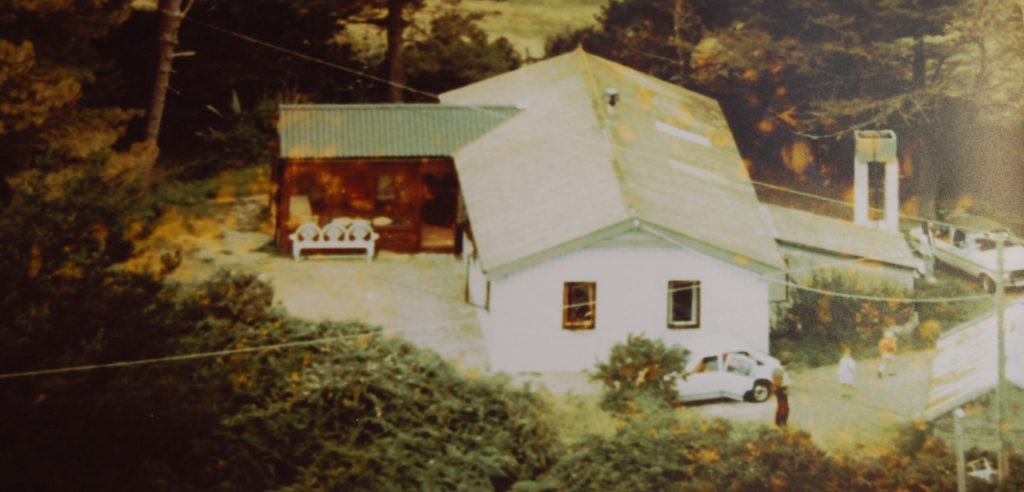
Marie has researched its provenance and found that in 1889, it was sold to Miles McLean senior for £75 (subsequently inherited by his son and namesake, Miles McLean junior). Its use at that time is not clear but it seems to have remained on the island until 1920.
In that year, it was dismantled, put on a donkey cart at Knightstown and rowed across to Reenard Point. From there it was put on the train for Dooks Halt where it was transported to Dooks Golf Club on the edge of the first green.[20]
There it was reassembled on a raft type platform to prevent it from sinking into the sand. The McLeans, who utilised the property as a holiday home, remained in possession until 1960 when it was purchased by Marie’s father, Louis Goor, as a going concern, for £250:
It was unfit for human habitation due to rat infestation amongst other things. It is made of Canadian Pitch Pine and the roof was originally clad in shingles and faced with wood. When my father, a civil engineer in Cement Limited, bought it he clad all of it in asbestos sheets![21]
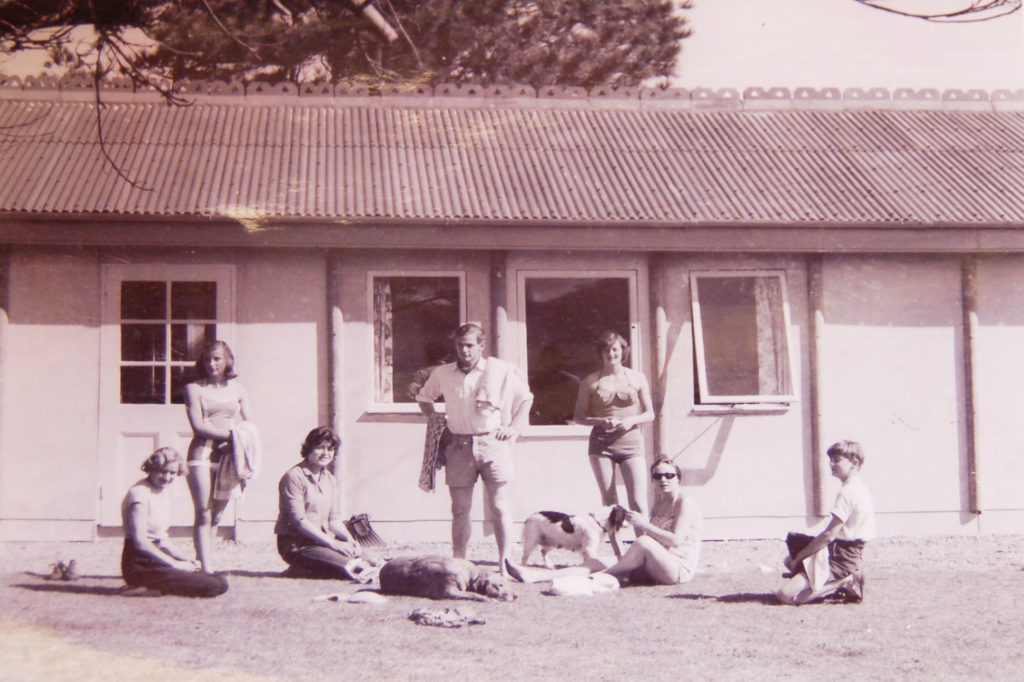
In 1989, Marie and her husband Brian purchased The Shack for £25,000 and employed an architect, Pádraig Murray, to advise on additions and alterations.
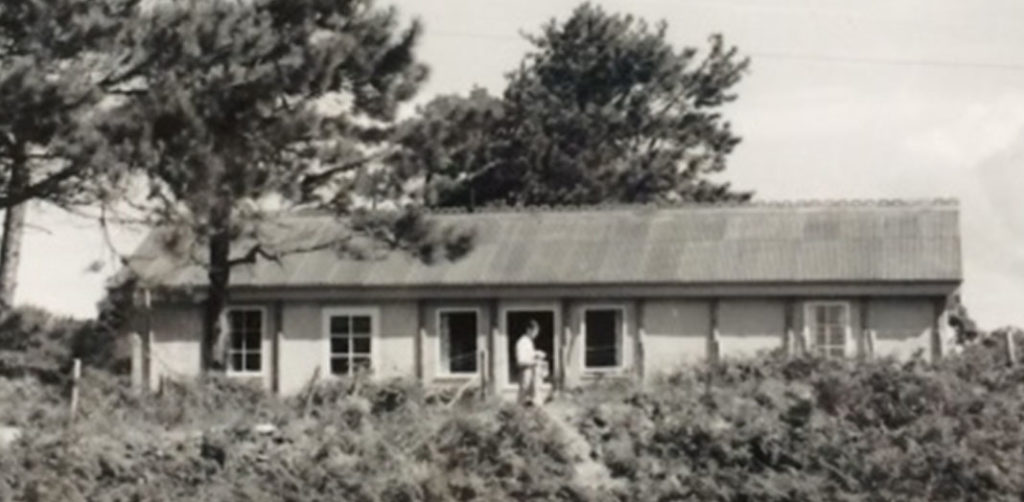
It became their permanent home in about 1994 and has become a museum-of-sorts to the history of the telegraph.

Anglo American Cable House
Though main operations had transferred to Knightstown by 1871, cables still came in at the Telegraph Field, Foilhomurrum, and the Anglo American Cable House was constructed there.[22]

Its years of functionality remain open to research.
The Telegraph Field today
The Telegraph Field is now in the ownership of Peter Browne of Castleisland.[23] Nearby, a number of information boards and engraved artworks dot the top of Foilhomurrum cliff like sentinels against the wind, testifying to its past glory.[24]
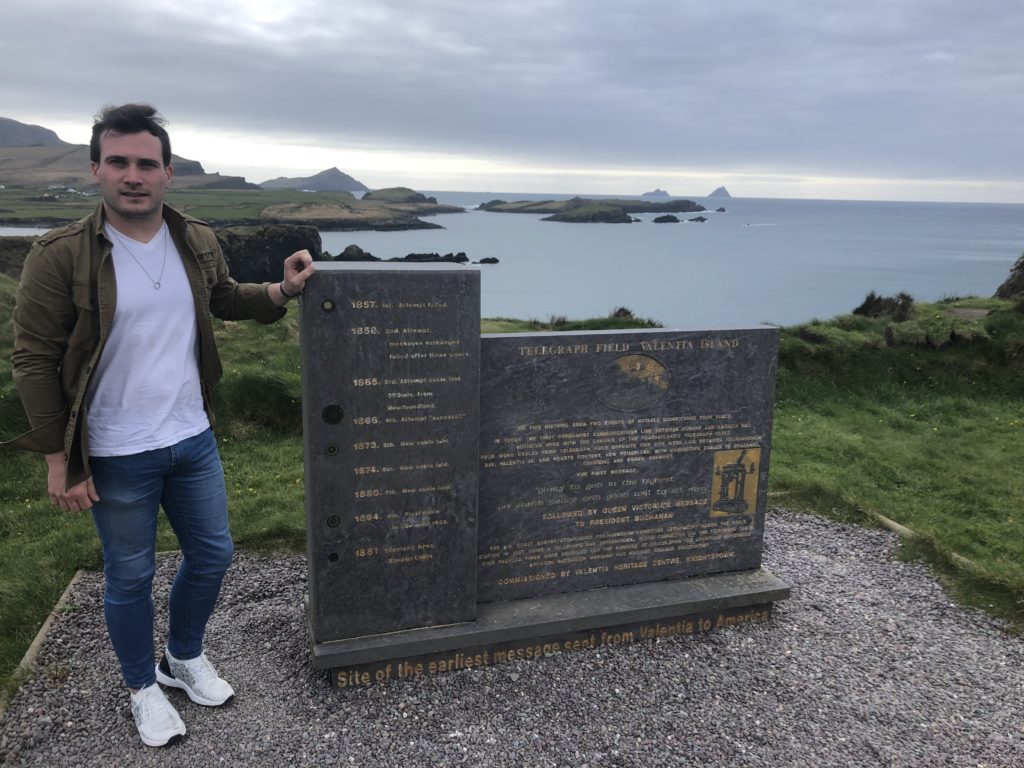
Meanwhile, the cable house, the last true visible sign of that glory, falls ever further into ruin.[25]
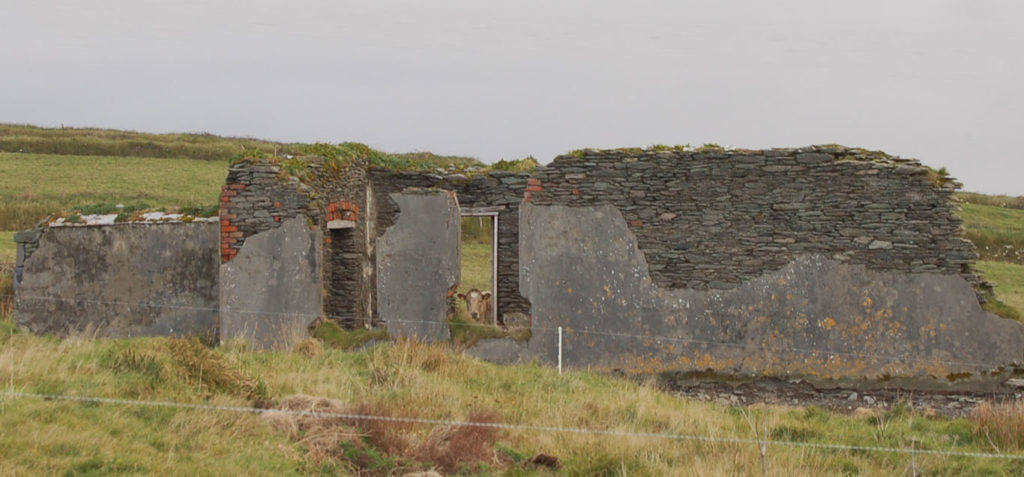
______________________
[1] A multitude of spellings apply, ie: Foilhamurum, Foilhummerum, Faylh Homurrum, Foilhomurrun, Foilhammeram, Foilhammerum, Foilhammerom, Foilhamerane, Foilhammerin, Faithummerum, Foilhommerhum, Foilhamarrum. See logainm.ie The spelling adopted here is taken from the Ordnance Survey. [2] See The Schools’ Collection (Baile an Ridire (Knightstown)), Volume 0479, Page 056: Foill = cliff; Hamrum = This is thought to be someone who drowned in the place. [3] Coarha Beg is in the parish of Valencia, or Kilmore. As with Foilhomurrum, a multitude of spellings apply. For example, An Comhartha Beag, Coaghabeg, Coorhabeg, Corrabeg, Corabeg, Coradh-Beg, Carhabeg. See logainm.ie. Its meaning is given as a marshy or barren district where seeds grow. In Valerie Bary’s Houses of Kerry it is given as ‘the small weir.’ [4] ‘Twenty police were ordered from Dublin to remain there’ (Limerick Chronicle, 20 July 1844). [5] ‘On the Bank Holiday Monday, John William O’Sullivan and Diarmuid Ring featured on Maurice O’Keefe’s programme Kerry Lore. In the programme, Diarmuid stated that a census taken in 1841 saw Valentia Island with a population of 3,000. John William stated that the village of Clynacartan in the western side of Valentia was once the capital’ (Kerryman, 4 August 2005). [6] ‘A Valentia Copper Mine. Mr T J O’Reilly asked the minister for Industry andCommerce whether he will state if to the knowledge of his Department a copper mine has beenever worked in Valentia Island near Foilhamarrum Bay; and, if so, will he state the period during which it had been worked and the percentage of copper found in the ore in this particular place? Reply – A Mineral resources Memoir published by the Geological Survey of Ireland in 1922 contains a reference to a copper bearing lode east of Clynacartan village on Foilhamarrum Bay. It is there stated that the records show a production of 65 tons of ore containing 23.25% copper in 1861 and of 34.75 tons with 24 per cent copper content in 1862’ (Kerry Champion, 15 June 1929). [7] Valerie Bary (Houses of Kerry) indicates that this line of the family came to Kerry in the 17th century or earlier. The family appears to have left the county in the late 19th century. The Valencia line married into the Segersons, Blennerhassetts, Sullivans and McCarthys. Captain John Spotswood, JP, was married at Valencia in March 1810 to Catherine, daughter of Maurice Leyne and Elizabeth O’Connell. The couple had 12 children: Theobald (1812-1844), Maurice Kroge (1814-1888) whose marriage took place on 18 December 1862: ‘In Cahirciveen church by Rev Richard Moore, rector, assisted by Rev P Moinagh, of united parishes of Dromod and Prior, Maurice Spotswood Esq MD of Cahirciveen, son of late John Spotswood Esq JP of Corabeg House, to Theresa, youngest daughter of (late) William Frederick Bentley Esq of Laurel Hill, Blackrock, Co Dublin’; John; Richard Leyne (1817-1877) whose marriage took place in March 1852: ‘At Ballyshean Church by Rev Charles Archdall, Richard Leyne Spotswood Esq of Ahada, Co Kerry, son of Capt John Spotswood of Corebeg House, to Penelope Cuffe Minchin, youngest daughter of late Humphrey Minchin Esq of Rathclough, county Tipperary’; Robert Lander (1827-1893), who married Emily, daughter of Henry Herbert in 1864; James (b1828), Agnes, Mary, Elizabeth, born 1828, married Francis Twiss in 1853; Cherry, Catherine or Christina, who died at Corabeg House in June 1848; Louisa, youngest daughter, died in Cahirciveen on 27 January 1856. A notice of approaching marriage was published in April 1895: J P Spotswood of Standerton, Transvaal, South Africa, grandson of late Captain J Spotswood JP of Corabeg House, to Miss Emily Fisher, second daughter of R N Fisher JP, late of Brooklands, Bellair, Natal, and grandson of late R N Fisher of Caxton Lodge, Highbery. Mrs Catherine Spotswood, wife of Captain John Spotswood and sister of Dr Lyne, Tralee, died in Caherciveen in June 1857. Captain John Spotswood Esq, born at Avoca, Cahirciveen c1779, died at Caherciveen on 2 April 1859. Note on Theobald Spotswood: The following applied to vote in March 1841 in right of rent charge out of lands at Corabeg: Theobald Spotswood Esq of Corabeg, in right of a rent-charge arising out of lands at Corabeg, and barony of Iveragh, 20l; Theobald Spotswood Esq of Corobeg, late of Rockgrove, Co Cork, in right of rent-charge of same lands, 20l. Case of Kelly in Replevin v the Knight of Kerry heard in 1847, an action by the Knight of Kerry to recover from the representatives of late Theobald Spotswood Esq the rent by lease on lands of Corabeg. Lease was made in 1794. ‘In the middle of the nineteenth century the Knight of Kerry leased an area of 922 acres of Coarhabeg and 815 acres in Bray to the Spotswood family who resided at Coarhabeg. They in turn rented small areas of land to numerous tenants. The Spotswood lands included the village of Clynacartan which, like Craugh, has since disappeared. The Knight of Kerry repossessed the lands about 1870 when, according to the Folklore Commission records, the Spotswoods became “briste”, the word in Irish for bankrupt ... No stories have survived about the tenants of the O’Connells or the Spotswoods’ (Valentia. A Different Irish Island (1992) by Nellie O’Cleirigh (pp22 & 55). [8] The schooner Thor was reported wrecked to pieces near the harbour of Lossiemouth in October 1855 due to the ‘intemperance’ of the captain and crew. The coastguard had to ‘drag the drunken captain on deck’ after he refused to leave the vessel. ‘We learn that two boards have been picked up at high water mark at Corabeg, in the Island of Valentia; one, eight feet long, bearing the name of the ship, Thor; the other, nine feet long, with the name Ulverstone. Both names are decorated with gilt ornamental work and do not appear to have been long in the water. A quantity of deals, whole and in pieces, have also been washed ashore in the same locality. From their decayed and worm-eaten condition, it would seem that they have been in the water a considerable time’ (Dublin Daily Express, 15 February 1861). Tralee, January 27 1864: The James Murphy (smack) of Cork has been wrecked at Corabeg near Port Magee, 54 miles from this port; a box of candles and 55 sacks of flour and oatmeal, being part of the cargo, were saved on the 16 January and sold at Port Magee on the 22nd. (Caledonian Mercury, 1 February 1864). [9] Kerryman, 16 February 2001. [10] Notes on the Promontory Forts and Similar Structures of County Kerry by Thomas Johnson Westropp, Part V Iveragh (Valencia to Sr Finan’s Bay) (Continued), The Journal of the Royal Society of Antiquaries of Ireland, Sixth Series, Vol 2, No 4 (Dec 31 1912), p291: ‘I have first met it in the map of Laurence Nowell, Dean of Lichfield, about 1570, as Valence while the Fiants give Valencia in 1588 … The later topographers from Dr Charles Smith down follow each other in deciding that the name is of Spanish origin and, despite all that Miss Hickson and others have written, this absurdity has got a new and widely extended currency among the ‘hardy perennials of error’ that no truth can kill by its appearance in the new edition of the Encyclopaedia Britannica; a most regrettable error of the compiler.’ Valencia is more commonly given as Valentia. However, for this work the spelling of the Ordnance Survey, Valencia, has been adopted, unless as given in quotation. [11] ‘It belonged mostly to the family of Annesley but was lately purchased by the present Earl of Shelbourne and gives title of Viscount to the Rt Hon Richard, Earl of Anglesea, whose ancestor, Sir Francis Annesley, was created Viscount Valentia March 11, 1621, the 19th of James I in reversion after the decease of Henry Power of Bersham in Denbighshire, constable of the Castle of Maryborough, 1st Marshall of Ireland, Governor of Leix and Privy Councellor who was created Viscount Valentia March 1 1620, the 18th of James I of whom some account may be seen in Moryson’s history of Ireland. It also gave title of Viscount to Donald MacCarty More’ (John O’Donovan Letters from the Ordnance Survey of Ireland, 1841, pp380-381). [12] The tale is preserved in the Book of Lismore. Further reference, Forbhais Droma Dámhgháire: The Siege of Knocklong (1992) edited and translated by Seán Ó Duinn. [13] Notes on the Promontory Forts and Similar Structures of County Kerry by Thomas Johnson Westropp, Part V Iveragh (Valencia to Sr Finan’s Bay) (Continued) The Journal of the Royal Society of Antiquaries of Ireland, Sixth Series, Vol 2, No 4 (Dec 31 1912), pp285-324. ‘Sculgaphort or Cromwell’s Fort was an early promontory fort before its adaptation by Cromwell’s soldiers. One might speculate that it was the other Dunruadh that gave its name to the neighbouring cliffs out to Bray Head but the subject is too uncertain, though no rival fort remains between it and Danganmore …It is on a steep sided headland ending in the tidal reef of Sculgaphort (port cliff) evidently bearing an older name of the headland. It has a late outwork, a nearly equilateral triangle of fosses 9 feet wide, 6 feet deep, and each about 63 feet long. These rest on the base of the older fosse 6 feet to 10 feet deep, 12 feet wide below, and cut deeply into the rock. A gangway crosses it, but to none of the later entrances: doubtless to the gate of the dun. The fosse is about 130 feet long; inside is a mound faced by the Cromwellian mortar-built wall and 36 feet wide; inside that, a hollow, 88 feet across, in which are at least two sites of late houses or barracks. On the rising ground beyond is another house-site, 15 feet across’ (p306). [14] ‘In 1710, the Irish House of Commons passed a vote for the construction of a fort on the island, in consequence of its exposure to the attacks of pirates: a signal tower has been since built on Bray Head at its southern point’ (Lewis Topographical Dictionary,1837). ‘Valencia was in Queen Anne’s wars much frequented by French privateers who, by keeping a watch on the island, lay very secure; for if any ship of war came to this place, the centinel gave notice to what end of the harbour she directed her course and then the privateer sailed directly out at the other, and thereby escaped’ (John O’Donovan Letters from the Ordnance Survey of Ireland, 1841, pp379-380). ‘Near the end of the cliff, and to the south-west, is a fragment of a wall ending in a gate-jamb. This is said to have been a watch-tower’ (Notes on the Promontory Forts and Similar Structures of County Kerry by Thomas Johnson Westropp, Part V, Iveragh (Valencia to Sr Finan’s Bay) (Continued) The Journal of the Royal Society of Antiquaries of Ireland, Sixth Series, Vol 2, No 4 (Dec 31 1912), pp285-324. [15] Commercial Journal, 17 June 1865. Dimensions of the telegraph hut, taken by Peter Browne on 4 December 2019, held in the collection, reference IE MOD/72. [16] Tralee Chronicle, 27 March 1866. Mrs Young may have been wife of Thomas Young, proprietor of the Valentia Hotel, later the Royal Valentia Hotel, Knightstown. See https://www.royalvalentia.ie/cmsFiles/royal_hotel_booklet.pdf. [17] Liverpool Daily Post, 20 July 1866. [18] ‘The military and police have not abandoned their searches [for Fenians] in the recently disturbed Kerry district. Frequent expeditions set forth to return without prisoners. A temporary police station has been placed at Foilhummerum to protect the Atlantic cable’ (Pall Mall Gazette, 4 March 1867). [19] The hospital committee’s first annual report stated that the hospital was created by ‘the generosity of the Post Office Authorities in bestowing on the island the building lately occupied by the Atlantic Telegraph staff at Foilhammerum. The donations of friends in England, Ireland and Scotland have enabled the committee to transport the building from one end of the island to the other and to erect it in its present site, roof it anew, and purchase stoves, beds, bedding, furniture’ (‘Valentia Hospital is 100 Years Old,’ Kerryman, 25 December 1971). [20] It was collected by Mr MacGillycuddy, father of Phil MacGillycuddy, and taken on his horse and cart to Dooks. Reference: In conversation with Marie Claire Stacey at her home in Dooks on 4 December 2019. [21] O’Donohoe Archive Ref: IE MOD/71. Research of Marie Claire Stacey. Louis Goor (1910-1994) married Alice Mary, daughter of Colonel James Reilly of Monkstown, Co Dublin. Louis was the eldest son of Belgian diplomat Maurice Goor (1877-1959) in office 1923-45, and Jeanne Goor (1888-1970) née Leemans. Louis Goor died at his home in Dalkey, Co Dublin on 30 August 1994 and was buried in Ballinakilla Cemetery, Glenbeigh. [22] The date of construction of the building may be contained in records of the Anglo American Telegraph Company held at the Smithsonian Institute, National Museum of American History. See Guide to the Anglo-American Telegraph Company Records NMAH.AC.0073 by Robert S Harding and Mumia Shimaka Mbasu, January 1986. With special thanks to Christine S. Windheuser, SI NMAH Archives Center, Volunteer. Reference Services, for providing this reference. [23] In October 1853, a Mr Palmer purchased Coarha Beg: ‘In the matter of the estate of Peter Fitzgerald Esq Incumbered Estates Court …Valentia Estates included Coarha-Beg and Bray … Coarha Beg purchased by Mr Palmer.’ 8 December 1855: ‘Final notice: Take notice the Incumbered Estates Commissioners have sold … Coarha Beg.’ The telegraph field was in the ownership of the O’Connell family of Knightstown for about one hundred years until the family sold the site in the 1960s. A number of subsequent owners sought planning for homes on the site. ‘Junior’ (Cornelius Joseph) Browne purchased the site in 2003. His son, Peter Browne is the current owner. [24] As a point of interest, Alan Ryan Hall is the sculptor of the monument at Foilhomurrum to the dance stage. There people once gathered for social entertainment in the pre-dance hall era. It is engraved: This last remaining stage on Valentia laid in 1939 “Comely maidens dancing at the cross roads” Eamon DeValera. [25] See ‘Fifty-two Degrees North: Calculating Castleisland’s Place in Longitude History’ and ‘Glory to God: Castleisland’s Link to the Atlantic Telegraph’ on the O’Donohoe website for further reference.


